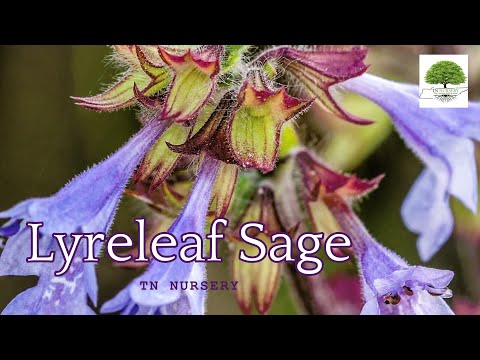Lyreleaf Sage for Sale
The Lyreleaf Sage perennial is a remarkable plant native mainly to the eastern and central United States, and west into Texas. It is a highly adaptable plant common in gardens, but interestingly, it can easily spread into lawns.
The hardy plant thrives despite being mowed and walked on, making it a great, native alternative to the typical turfgrass of lawns. Despite its more moderate growth rate, it is a robust self-seeder, helping it spread quite far. The whole plant is edible and is particularly tender when young. The leaves have a delicate mint taste and can be used to make tea or cook with similar herbs.

Lyreleaf Sage Florida Plant Details | Salvia lyrata
Family: Lamiaceae
Light Requirement: Full Sun, Partial Shade
Height: 1-2 ft
Spread: 1 ft
Growth Rate: Moderate
Soil Preference: Well-drained
Bloom Time: April - June
Flower Color: Purple, Blue
Wildlife Value: Pollinator-friendly-Bees and Butterflies
Notable Traits of Lyreleaf Sage | Edible Leaves & Wildlife Value
The Lyreleaf Sage comes from the lyre-shaped leaves, which appear as large, basal rosettes. The plant is easily identifiable, even when not in bloom, because of the irregular edges of its leaves and the deep purple-brown markings along their midribs.
The square stem is sturdy and upright, covered in hairs, around which the flowers are arranged in whorls, forming a terminal spike. The flowers' sepals, which protect the bud before blooming, are equally distinct. They are purplish-green, hairy, and fused, with the tubular flower emerging from their meeting point.
The blossom itself is slightly trumpet-shaped, with a longer, lower lip extending out. This provides an easy landing place for pollinating insects.
Growing Salvia lyrata in Gardens
This mint-family member is typically a roadside flower, found at the edge of woodland areas, along highways and roads, or in fields. The Lyreleaf Sage prefers well-drained, loose and sandy soil, and can reseed readily with regular watering.
It tends to prefer areas with full sun or partial shade, but will tolerate a number of climatic conditions in its native habitat. Its showy purple-blue blooms are a beauty during the spring, and the evergreen foliage provides a gorgeous blanket of green in every season.

Exposure
Lyreleaf Sage (Salvia lyrata) thrives in partial to complete shade, making it perfect for woodland gardens or shaded areas. It prefers dappled sunlight or filtered shade, where it can flourish without the harshness of direct midday sun.
Height at Maturity
Under 12"
Usage
Groundcover
Shipped As
Bare-root
Ships
USPS
Planting Zones
5-9




